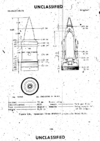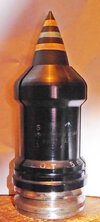Any ideas on who and what this is? I know it is a 17 pounder APDS. I am trying to get the country and nomenclature.
Also, and data on the item would be nice too ...
And if nothing else, these are some nice images to share.
DIA: 80MM (full round)
DIA: 59MM (Sabot)
Length: 203MM (Sabot With tracer)
Length: 201MM (full up item)
Joe
Also, and data on the item would be nice too ...
And if nothing else, these are some nice images to share.
DIA: 80MM (full round)
DIA: 59MM (Sabot)
Length: 203MM (Sabot With tracer)
Length: 201MM (full up item)
Joe















